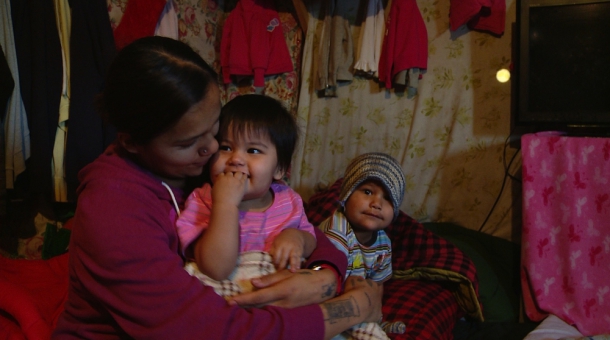
Last week we looked into the dire conditions of post-earthquake Haiti, in which its citizens were not only left homeless, but have since been forced to live in ill-maintained campsites.
This week, we turn our attention to another housing issue, albeit on a smaller scale but one much closer to home. At times, we must remind ourselves that the word “impoverished” isn’t strictly reserved for those living in the third world, it can occur right here in our own backyard.
The People of the Kattawapiskak River (2012) is produced, written, narrated and directed by Alanis Obomsawin, in association with the National Film Board of Canada. An award-winning documentary filmmaker, she has produced over 30 works in a career spanning more than 40 years.
The opening credits illustrate a small town in the midst of a harsh winter. Despite the numerous houses, shacks, cabins and trailers, there’s a deep sense of isolation which seems to define the town itself. During a chilly, late afternoon sunset, a group of children play pond hockey, their laughter ringing loud in the otherwise empty stretch of snow-covered terrain. This quintessentially Canadian image of children playing hockey recurs throughout the film.
The dreadful housing conditions in the town of Attawapiskat have led to unacceptable standards of living, especially when compared to the rest of Canada. Most of the houses were built in the ‘60s and ‘70s and they’re in need of major renovations. Today, there are over 1,700 people living on the reserve, yet as a result of a rapidly growing population, inadequate housing solutions and a lack of funding, there are approximately 1,000 people in need of a home. Sadly, many end up living in overcrowded sheds or tents without electricity, water or heating. In fact, in some cases, 20 to 30 people live in a one family home. These conditions resemble a minimum-security prison. The Kattawapiskak region is located 700 km north of Timmins, Ont. and during the coldest months of the year, the winds reach from -40 C to -50 C.
The director alternates between interviews with residents, news footage and historical lessons. Despite the upsetting conditions of a town in such an unforgiving land, Obomsawin manages to capture the harsh beauties of the region. One of the film’s few cheerful moments occurs in the town’s recreation centre, a place where both the young and the old come to forget their countless troubles, if only for a few hours a week. Normand Guilbeault, a jazz musician from Montreal, provides the slightly ominous music heard throughout the film, employing a double-bass and the steady, rhythmic beat of native drums.
The People of the Kattawapiskak River screens Monday Jan. 28, at 7 p.m. in Room H-110, 1455 de Maisonneuve West. Director Alanis Obomsawin will be in attendance. For more information, visit www.cinemapolitica.org/concordia



